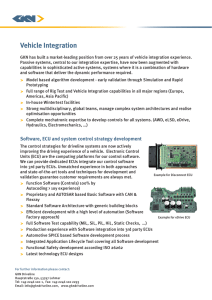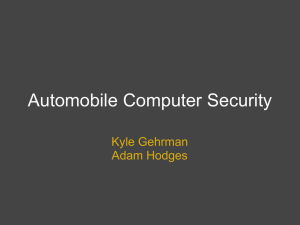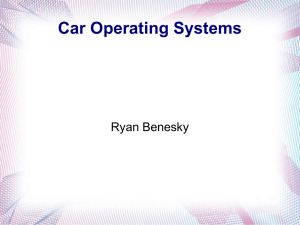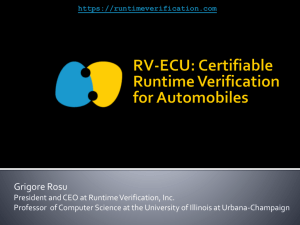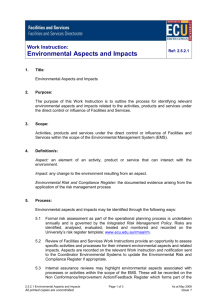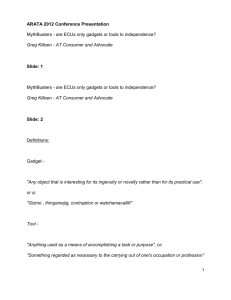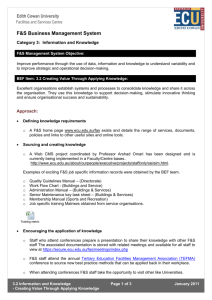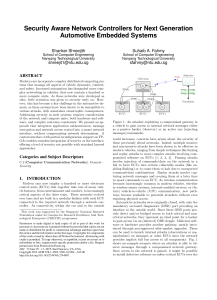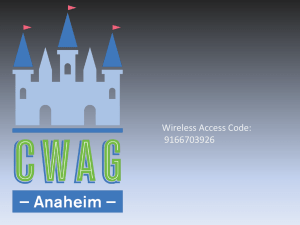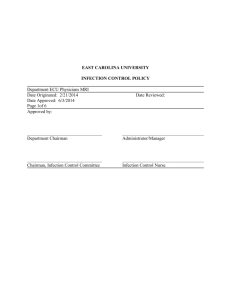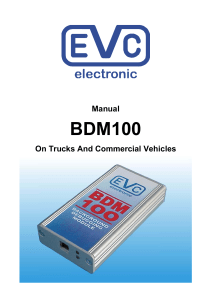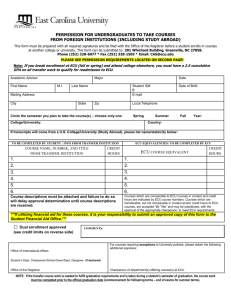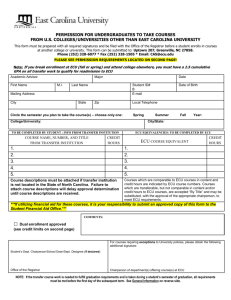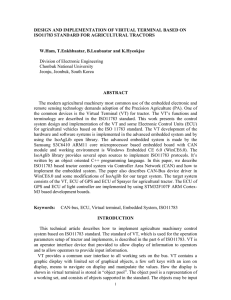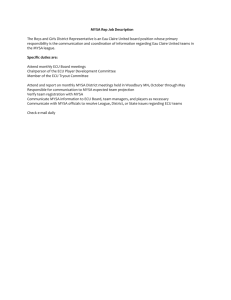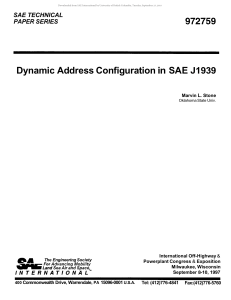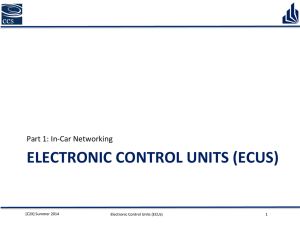Car Hacking
advertisement
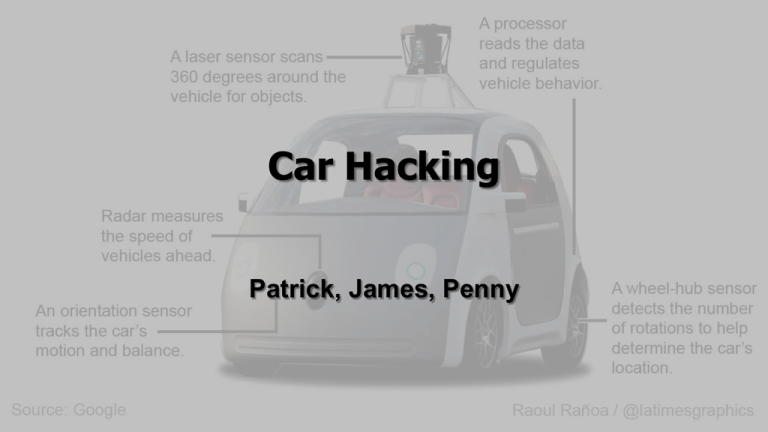
Car Hacking Patrick, James, Penny What is…? What is a car? Why are there computers in cars? Why can something other than a car access these computers? Not an Outline ● Internal Structure o o o o ECUs Controller Area Networks Seed to Key Algorithms Device Control ● Exploits o Testing Methodology o Attack Strategies o Attack Results Why is car hacking bad? ● ● ● ● Control car components remotely Physical implications Privacy concerns You won’t know about it afterwards Controller Area Network ● CAN: Controller Area Network ● ECU: Electronic Control Unit o Car computers in general ● Comprised of 2 buses o High speed bus: safety critical, more trusted o Low speed bus: non-critical, convenience modules ● Required in all cars sold in US since 2008 CAN Security CAN packets: header that says where the packet goes ● No addresses used ● All packets broadcast physically and logically to all nodes ● Each node decides if it should process the packet Vulnerabilities: ● ● ● ● ● ● All nodes see all traffic All nodes communicate all other nodes DoS-able No identifiers Firmware updates Weak access controls that aren’t used Seed to Key Algorithms ● Authentication method for sensitive operations o One ECU sends the seed (the challenge) o The other replies with the key ● Each ECU has its own seed and key ● Keys and seeds are fixed and stored in the memory of each ECU ● Algorithms used to compute them are not stored in ECUs for “security” ● Return of challenge not always used DeviceControl ● Essentially debuggers for cars o Assists in diagnosis of a car’s components o Examines state o Manipulates state ● In operating systems debuggers are limited by access-control ● CANs do not have access-control Testing Methodology ● Bench o Testing individual ECUs ● Stationary Car o Car on jacks ● Car in motion o Professional driver, closed course. o Do not attempt. ● CarShark Attack Vectors ● Packet Sniffing and Target Probing o Analyze packets with CarShark o Only sees normal operations ● Fuzzing o Send random or partially random packets o Useful for system disruption o Exploit the DeviceControl service ● Reverse-Engineering o Dump assembly code & analyze o Adding new functionality Non-Moving Car Testing ● I.E. Stationary ● Tested on all ECUs in the car ● Radio o First ECU tested, easiest to exploit o Disable user control o Display arbitrary messages and play arbitrary sounds ● Brakes o Fuzzing showed how to lock individual brakes as well as sets o DeviceControl Key not needed Non-Stationary Car Testing ● I.E. Moving ● Tested on ECUs that don’t affect the safety of the car or driver ● Exploits were transmitted from a chase car ● Cancellation packet sent after exploit is verified ● Laptop pulled from port if anything goes wrong o Car functions return to normal shortly after laptop is removed ● Only difference was EBCM Issues ● Required (almost) physical access to car via o OBD-II port o Bluetooth o Wireless Tire Pressure Sensors ● Given physical access an attacker could o Cut breaks o Set fire to car o Place bomb in car Future (to the paper) work Comprehensive Experimental Analyses of Automotive Attack Surfaces http://www.autosec.org/pubs/cars-usenixsec2011.pdf [In] Conclusion Cars are insecure. You’re all engineers, fix it. Questions? Too bad. Defenses ● Prevent reflashing ● Signed firmware updates ● Disallow 3rd party components
